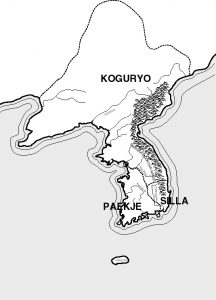“In self-defense and in defense of the innocent, cowardice is the only sin”
You are walking on the street and suddenly, you get attacked out of the blue. What would you do? Do you run? Or do you fight?
If you are going to fight, you would do better if you know the arts of self-defense, also known as martial arts. Taekwondo is one such form of martial arts. The name “Taekwondo” has been formed by the combination of the words: “Tae” which means “to kick”, “Kwon” which means “to punch” and “Do” which means “method”. Simply, Taekwondo means the method of kicking and punching.
The earliest records of Taekwondo practice date back to about 50 B.C. During this time, Korea was divided into three kingdoms: Silla, Koguryo, and Paekche. Tae Kyon (also called ”Subak”) is considered the earliest known form of Taekwondo. Paintings from this period have been found on the ceiling of the Muyong-chong, a royal tomb from the Koguryo dynasty, depicting unarmed people using techniques that are very similar to the ones used in Taekwondo today. Although Taekwondo first appeared in the Koguryo kingdom, the Hwarang warriors from Silla are credited with the growth and spread of Taekwondo throughout Korea.
Today, the original Five Codes of Human Conduct formed by the Hwarang warriors, have been correlated into the so-called Eleven Commandments of modern day Taekwondo, which are:
- Loyalty to your country
- Respect your parents
- Faithfulness to your spouse
- Loyalty to your friends
- Respect your brothers and sisters
- Respect your elders
- Respect your teachers
- Never take life unjustly
- Indomitable spirit
- Loyalty to your school
- Finish what you begin
With these 11 commandments in mind, the brave fighters among the freshers from each faculty, took to battle amidst a frenzy of kicks and punches. The venue was the indoor gymnasium at the University of Colombo. In consideration of the safety of the players, there were no one-on-one matches or sparring scheduled. Instead, a display of technique, skill and speed was used to determine the winners of the event.
After the competitors were divided into weight classes, they performed rapid high kicks under a given time limit. Afterwards the teams performed a shuttle relay. During the women’s shuttle relay event, Team A from the Faculty of Science came first, while UCSC and Science B took the 2nd and 3rd places. In the men’s relay, Team A of the UCSC emerged victorious, with Science A and UCSC B securing the 2nd and 3rd places respectively.
The women’s championship was won by the Science Faculty while Nursing and UCSC took the next two places. In the men’s event, UCSC won the championship while the Faculty of Science came in as the runners-up. Nursing followed as the second runners-up.
Image Credits:
http://authentictkd.ca/newcms/wp-content/uploads/2017/07/cropped-tkd_banner_new.png
https://msu.edu/~spock/history.html

